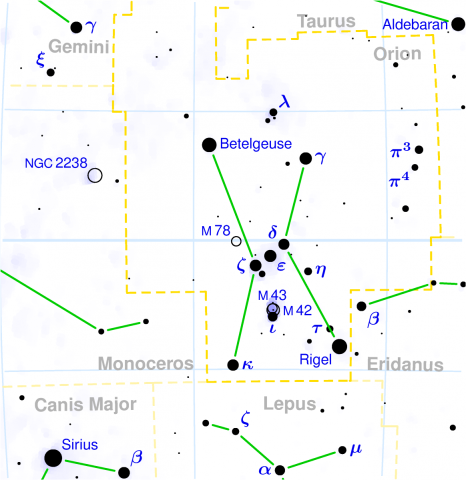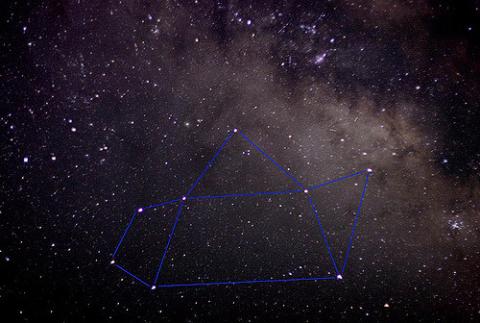Have you ever looked for pictures in the stars at night? Like the sky is a giant dot-to-dot puzzle?
We call groups of stars which form a picture in our imagination, a constellation.
Ancient cultures all over the world created their own constellations and told stories about them.
You might have seen parts of constellations in the sky at night. Maybe you've spotted the 3 bright stars which make a "belt" in the constellation, Orion.

You might have seen the part of the Great Bear which contains the "big dipper". Did you know we have a name for these smaller parts of constellations? We call them asterisms.
Astronomers use constellations as a map of the night sky. When they talk about a constellation they mean the area of the sky it is in - not just the stars in it.
Astronomers divide the sky into 88 areas each containing a constellation. This means every point in the sky belongs to one of those 88 official constellations.
- Cultural Views of the Night Sky
Different parts of the world have different views of the night sky. This means they see different patterns in the stars and have created different constellations. In the Northern Hemisphere, we still use the constellations people in Ancient Greece imagined and named. European explorers in the 15th century onwards named constellations in the Southern Hemisphere. Though indigenous people (the people who first lived there) had their own names for shapes in the stars.
You might already know 12 of the names of the 88 official constellations. Names like Leo, Aries, or Libra. We call these the signs of the zodiac. These constellations are in the area of the sky the Sun appears to travel through during each year. This is why people use them as a calendar. Many people believe these constellations to have special significance.
Learn more about the 88 constellations and the stories different cultures tell.
- Asterisms
An asterism is a pattern of stars, smaller than a constellation.
Asterisms can include stars from one constellation. Or they can be made using stars from different constellations. One of the most famous asterisms is the Big Dipper or Plough. This asterism is made of stars from Ursa Major also known as the Great Bear.
The stars in asterisms appear together in the sky, but they are usually not close together in space. For example, there are 7 stars in the Big Dipper. The closest is 58 light years from Earth. However, the furthest is 124 light years from Earth. So these stars are very far apart. Also, it takes the light from the more distant star an extra 66 years to reach us here on Earth!
Image CreditThis work by makelessnoise is licensed under Creative Commons Attribution 4.0 International
CreditThis work by makelessnoise is licensed under Creative Commons Attribution 4.0 InternationalAsterism known as the "Little Teapot"
